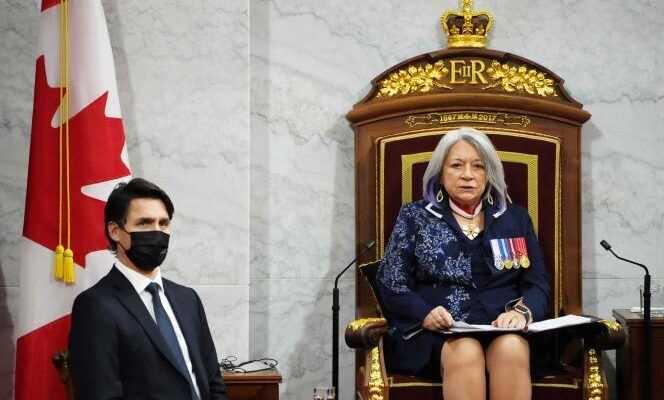Two months after regaining his seat as Prime Minister, again at the head of a minority government after a snatch victory obtained on September 20 following the early federal election he himself called, Justin Trudeau kicked off the resumption of parliamentary business on November 23 by presenting his new Speech from the Throne.
The opportunity for him to reaffirm that his “Top priority” was to put an end to the Covid-19 epidemic, in particular by extending vaccination to children from 5 to 11 years old. The government is making the exit from the pandemic the key to economic recovery, a recovery weakened in Canada by a worrying labor shortage but also by an inflationary surge (+ 4.7% in October compared to October 2020 ). A blow to middle-class families that the Prime Minister is committed to alleviating, by increasing aid for the construction of new affordable housing and by generalizing to the whole country, a system of daycare centers for young children at 10 dollars (8, 90 euros) the day.
But this Speech from the Throne was above all marked by the reiterated desire to make reconciliation with the First Nations peoples a reality. The most innovative character of this very formal ceremony, moreover, was due to the “quality” of the speaker of this speech traditionally read by the representative of the Queen of England, Head of State of Canada: for the first time time in the history of the country, it was an aboriginal, Mary Simon, an Inuk from Kuujjuaq located in northeastern Quebec, appointed Governor General on July 6, who delivered it. French Canadians in Quebec strongly attacked Mary Simon when she was appointed for her unilingual Anglophone status: the Governor General read the Prime Minister’s text alternating three languages, English, French (with a pronunciation still very hesitant) and l ‘Inuktitut.
“We are advancing on the path of reconciliation”
It is in her mother tongue, that Mary Simon delivered a brief personal message, before the reading of the official speech of general policy. Stressing from the outset that this ceremony was held “In the place of unceded territory of the Algonquin people”, she noted that the discovery in May of 215 children’s graves on the outskirts of the former Kamloops Indian Residential School (British Columbia) had reminded everyone how much “The past actions of the governments and institutions of yore had been devastating” and continued to cause suffering. Corn ” there is hope “ she continued, “The commitment of non-natives to recognize this suffering shows that we are moving forward on the path of reconciliation”.
You have 34.64% of this article to read. The rest is for subscribers only.
